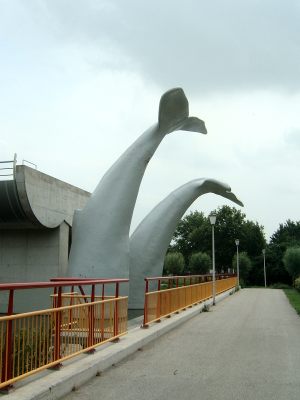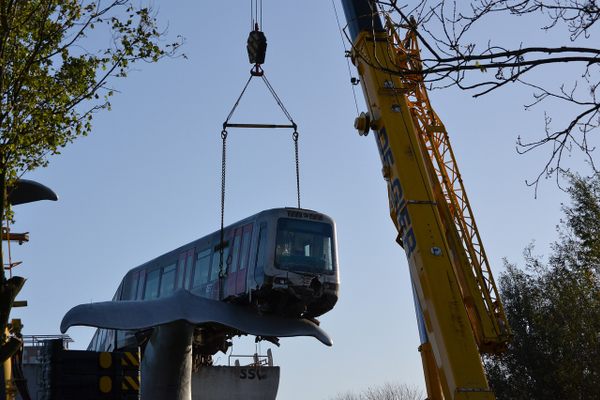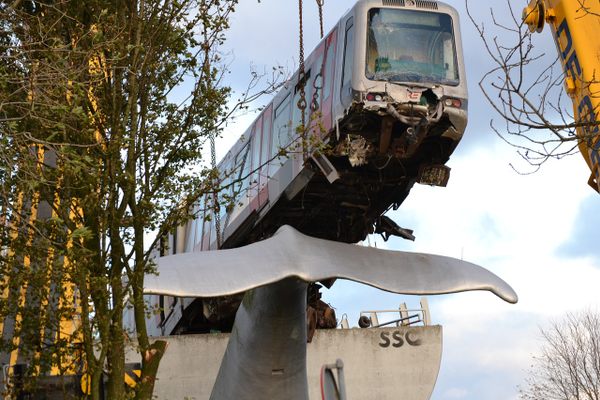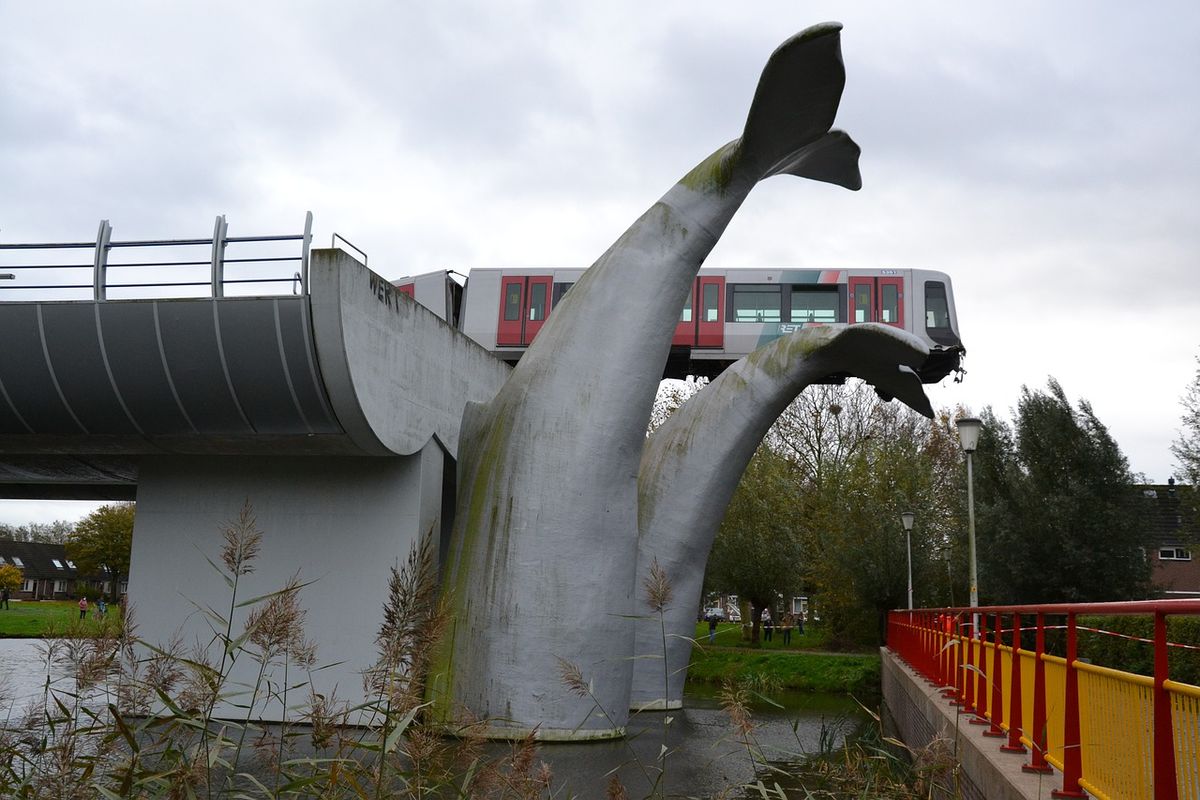About
At the De Akkers metro station in Rotterdam’s suburb of Spijkenisse on November 2nd, 2020, a metro train breached the station's end barriers and nearly plummeted over 30 feet from the elevated rails. All that saved the train and its operator was the fact the front carriage was caught and held aloft by one of two whale tail sculptures near the end of the track.
The driver, the only person aboard at the time, sustained no injuries and was able to leave the vehicle—all while his two-ton carriage was perilously perched upon the fluke of the sculpture.
The two plastic tails stand equal in height to the metro's rails, and at around 30 feet, they are true to the scale of a real blue whale’s tail. The artwork was installed as a visual pun, as De Akkers station is the end, or tail, of the metro line. In a further play on words nobody expected, the train came to rest on the tail, also known as a whale’s fluke.
The sculptures originally named "Walvisstaarten" ("Whale Tails"), were created and erected in 2002 by a team of architects, artists, and engineers. Following the miraculous events of November 2nd however, local authorities renamed it "Saved by a Whale’s Tail."
Early concepts considered modeling the sculpture after the tail of a local fish, the herring. Fortunately for the metro, the much more substantial whale tail was chosen instead.
Designed with Rotterdam’s heavy winds in mind, the artwork needed to resemble and honor the natural proportions of a blue whale's tail, while also being able to endure the elements. The design's aerodynamics were tested in a wind tunnel similar to the manner in which airplanes are tested.
Almost 20 years after they were first installed, their creator Maarten Struijs was amazed that they had been able to support the train without breaking or crumbling. Even more impressively, one of the tails contains an internal steel structure. However it was the other, which is hollow and consists solely of six-millimeter thick plastic, that was able to support the impact and weight of the runaway train.
The fantastic sight of the train precariously balanced on the tail attracted so many onlookers that by the late morning, local authorities had to disperse the crowd. While the unique sculpture remains, the train has been removed.
Related Tags
Published
December 11, 2020
Sources
- https://www.bbc.co.uk/news/world-europe-54780430
- https://www.smithsonianmag.com/smart-news/fluke-accident-whale-tail-sculpture-saves-out-control-train-destruction-180976197/
- https://www.forbes.com/sites/nishandegnarain/2020/11/02/whale-tail-saves-train/
- https://www.forbes.com/sites/nishandegnarain/2020/11/03/the-whale-tail-sculptors-who-saved-a-runaway-train/?sh=16c9323f4834
- https://www.theguardian.com/world/2020/nov/02/all-cetaceans-go-whale-sculpture-stops-dutch-train-crashing-into-water




























